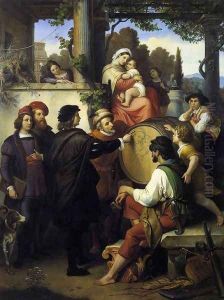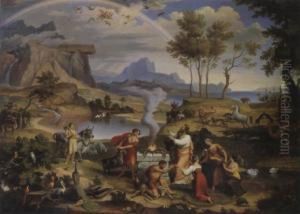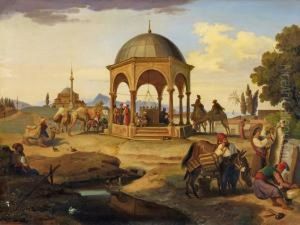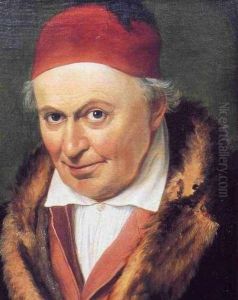Johann Michael Wittmer Paintings
Johann Michael Wittmer was a German painter born on October 24, 1802, in Murnau am Staffelsee, Bavaria. He is associated with the Düsseldorf school of painting, although he spent a significant part of his career in Italy, which had a profound influence on his work. Wittmer initially trained in Munich under Peter von Cornelius, a prominent figure in German art who was a leading painter of the German Romantic movement and a pioneer of the Nazarene movement.
Wittmer's early works were primarily religious in nature, reflecting the Nazarene focus on spirituality and the revival of medieval and early Renaissance artistic styles. However, his art evolved as he became increasingly influenced by the Italian environment. In 1829, he moved to Rome, which was a hub for artists from across Europe. There, he became part of the German artist community, known as the 'Deutschrömer,' and was deeply influenced by the works of the Renaissance masters, as well as by the Roman Campagna's landscape.
Throughout the 1830s and 1840s, Wittmer produced a number of works that were characterized by their attention to detail, their romantic sensibility, and their classical themes. He became proficient in depicting both historical and mythological subjects, often blending them with the landscapes he observed around him. Wittmer's Italianate landscapes and genre scenes contributed to the popularity of the Biedermeier style, which emphasized simplicity and modesty in reaction to the excesses of the previous Rococo style.
Johann Michael Wittmer remained in Italy for most of his life, though he maintained his ties with the German art world. He was a member of several art associations and received commissions from German patrons, including royalty. He passed away on September 18, 1880, in Rome. Today, his works can be found in various art collections and museums, appreciated for their combination of German Romanticism and Italian classical tradition.



